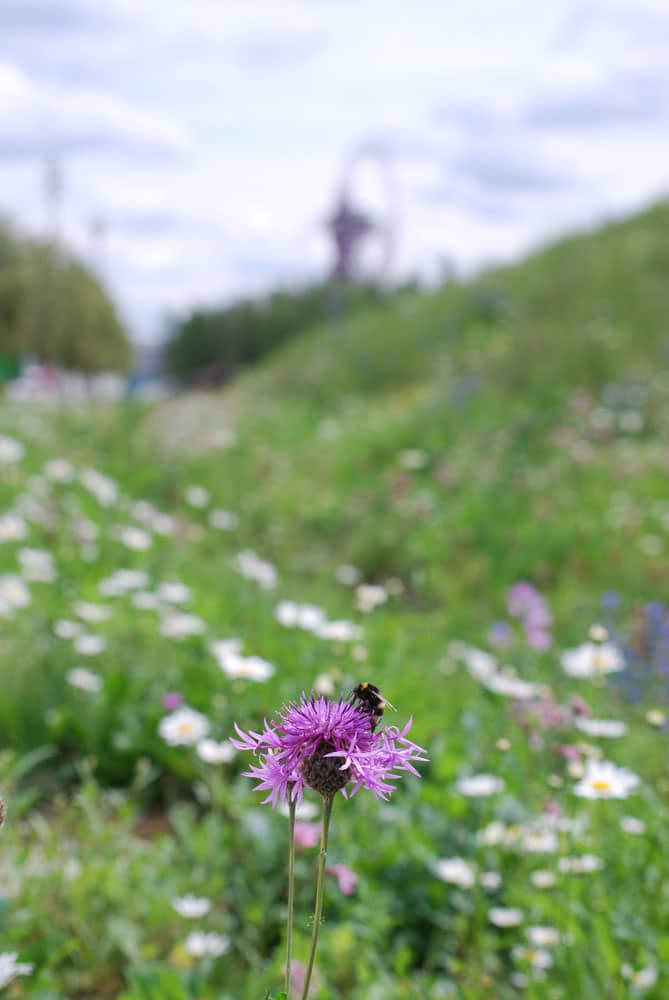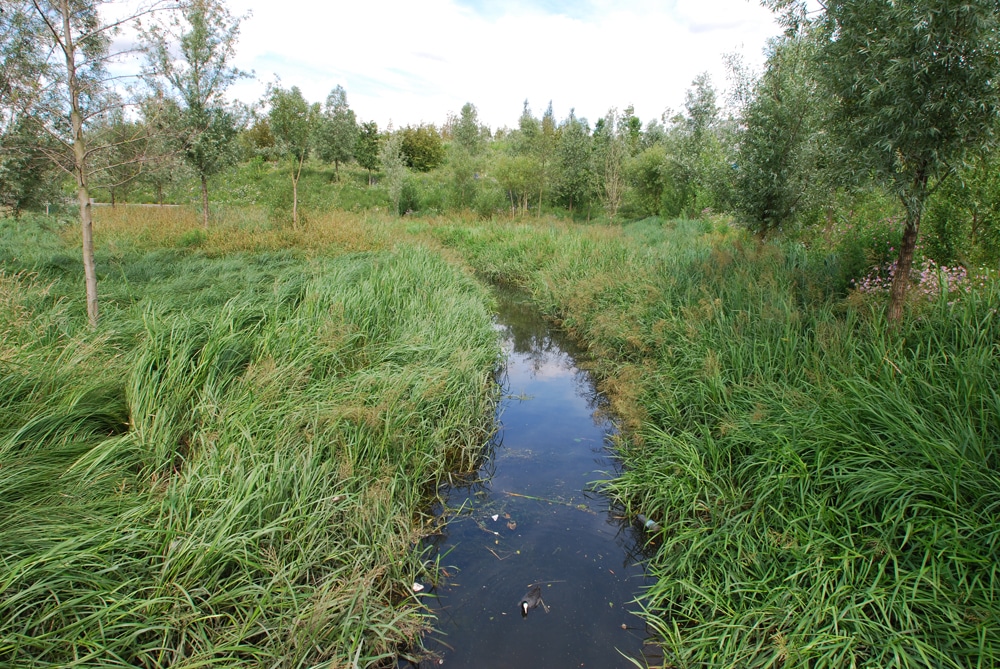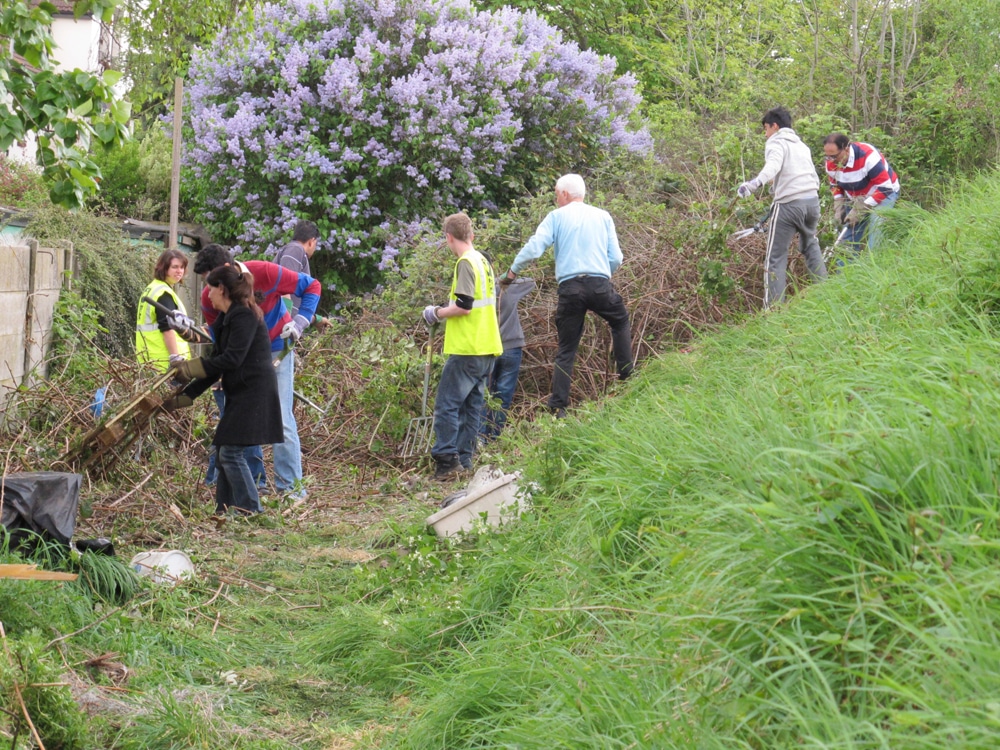Girish Rambaran, London Wildlife Trust Olympics Legacy Manager

Common knapweed and bumble bee on a SUDS in the Olympic Park © Girish Rambaran
London Wildlife Trust has been a ‘critical friend’ of London 2012 since the Games were at the bid stage in 2004. We recognised that to not have a voice in the largest urban park development in the UK for the last 150 years would be to the detriment of London’s wildlife. So, our support was given on the proviso that there would be a net-gain in biodiversity as a result of the Games and we have been working towards this end ever since. Now that the Games are over and the Park is closed for its transformation and re-fit, the London Legacy Development Corporation will be aiming to fulfil its promise to expand and enhance the wildlife habitats and green space already created. These will total at least 45 hectares of wildlife-rich habitats and 102ha of Metropolitan Open Land. The crucial work begins now and London Wildlife Trust believes people will be the key to our success and that GiGL can help us deliver an ongoing Olympics Citizen Science programme.
From advising on the planting palette of the parklands and production of a Biodiversity Action Plan for the Olympic Park, to working to improve the natural environment of the “fringe” of the Park, our involvement has always been about securing a lasting natural legacy. Our other key focus is on people. We provided a much needed opportunity for people to participate in local land conservation and for children to experience the burgeoning Olympic Park and their local natural environment. A once neglected piece of impressive green infrastructure called the Greenway (aka the Northern Outfall Sewer) in Tower Hamlets and Newham suddenly became the major conduit for cyclists and walkers to get to the Olympic Park Games.
We facilitated local people to enhance and take care of the Greenway with the help of people from outside the host boroughs. Our education project at the View Tube – a social enterprise and community venue located on The Greenway adjacent to the Olympic Park – provided primary school children from all over east London with a chance to not only see the Park being built but to learn about the history, regeneration and wildlife of this extraordinary landscape. We want to bring this connection of people and wildlife into the Park when it reopens as the Queen Elizabeth Olympic Park in July 2013. Judging from the reception the existing parklands received from thousands of spectators throughout the Games, this should not be difficult to achieve.

Coot in the wet woodland in the North Olympic Park © Girish Rambaran
Our recently published “A Natural Legacy of the 2012 Games” sets our vision for the Queen Elizabeth Olympic Park. It outlines our aspiration for a robust and living landscape that can mitigate a warming and complex climate, further enhance the region’s biodiversity and foster greater community cohesion in the upkeep and enjoyment of its parklands. Some of the habitats we expect to see expanded in the Queen Elizabeth Olympic Park include species-rich grassland, wet woodland, reedbeds and ponds. If these habitat targets are achieved and managed sensitively, the animals we can expect to see include toadflax brocade moth, European eel, grass snake, black redstart, reed bunting, water vole and otter.

Conservation volunteering on the Greenway © Girish Rambaran
The Olympic Park biodiversity action plan is central to our vision. A combination of conservation volunteering, outdoor environmental education and simple enjoyment of the parklands can come together in a citizen science programme to monitor success in increasing the Park’s biodiversity. Working together with GiGL, we want to encourage people to become local biodiversity experts that report back their wildlife sightings in a quick and easy way. Much like our Owl Prowl and Kestrel Count campaigns, we’ll be hoping to make all 28 species and groups in the Olympic Park BAP accessible to those living, working or visiting the park. For example, should anyone spot a black redstart close to the velodrome, our idea is for there to be a dedicated portal for them to quickly report this sighting. Over time, the data we receive (or not) will help us assess how well (or not) we are doing in improving and managing the habitats for London’s wildlife. We hope that the Queen Elizabeth Olympic Park will be known as one of the best places to spot urban wildlife in London.
We are certain that our action plan will not only help deliver environmental benefits but will also help achieve the ambition of raising the socio-economic standards of this area of east London in line with the London-wide average. Our vision sets out to help make the Queen Elizabeth Olympic Park and its hinterland one of the best places to live, work and enjoy.
